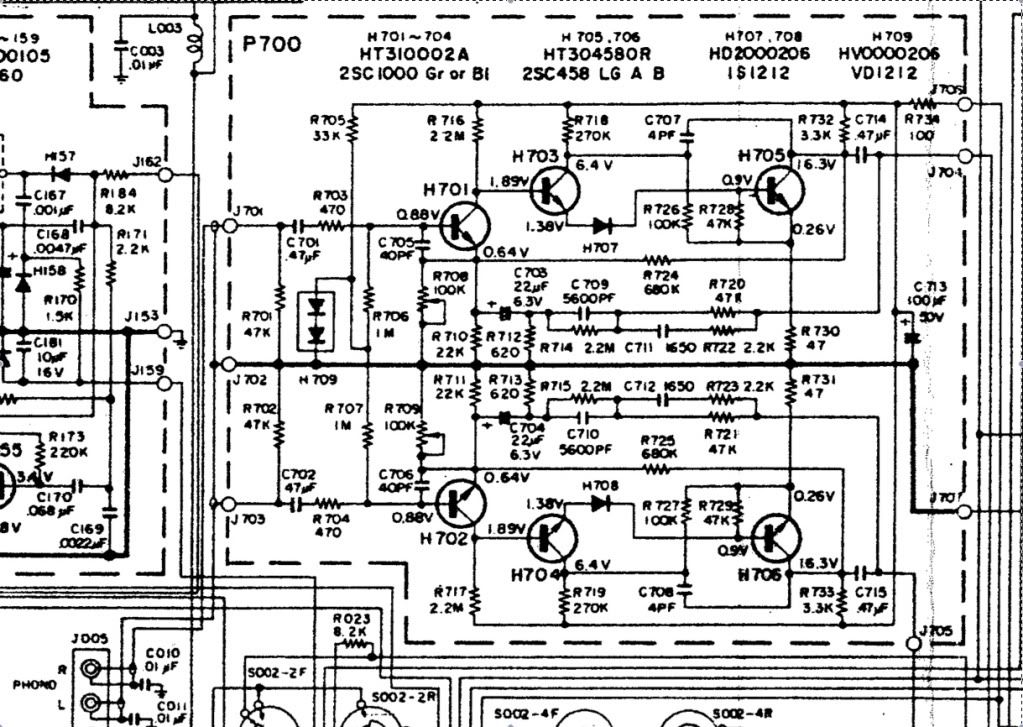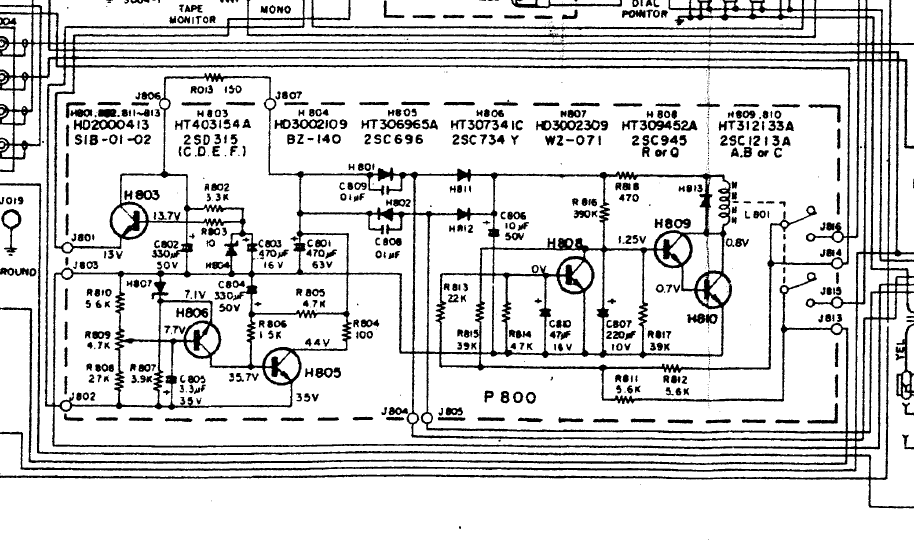> I don't see a lot of local NFB
You usually don't, in a 3-transistor phono stage, you need all you can get to work the overall NFB.
But what small local NFB this has, don't seem to stabilize against device variation. R712 does nothing for H701 emitter, R728 is moot against H705's B-E....
What is the overall picture?
H701 has as little as 620 ohms in its emitter, an obvious 2.2Meg in collector, and probably ~~1Meg of loading from the next stage; audio gain is very high, 500-1000.
H703+H705 form a Darlington with gain approaching 3300/47 or 70.
Overall forward gain is around 50,000.
It's a 3-stage amplifier and that would be HF-unstable under NFB. You would expect a few-pFd compensation cap from H705 collector to H701 collector or H701 collector to ground, to shape the open-loop frequency response for stability. I don't see that, unless via C707 through H703 C(cb). It may have "worked out" with the specific transistors used
The 1KHz gain is near 50 so the bass gain is near 500. It's got 40dB NFB down around 50Hz. Since there "must" be overall open-loop roll-off, we might assume 40dB-60dB NFB all the way up.
Tons of overall NFB.
But is it "N"? The wobbles suggest it goes Positive at subsonic.
I have fought another topology but this is different. Took a while to see it.
Consider C714 against its (unknown) load, C703 against H701 Emitter, and impedance into H701 emitter when H701 base is held by C701. C714 and C703 obviously form two high-pass filters. The emitter of H701 is ~~2K when C701 is low-Z and some higher value when C701 goes high-Z. So the C703 pole is not simple. This is a 3-pole network. Different than the C-R-C-R-C-R network in a Tremolo oscillator only in degree. The C701 pole is soon zeroed, so it needs a gain much more than 27 (magic number for simple C-R-C-R-C-R oscillator) to oscillate. But we do have lots of open-loop gain. More or less depending, in fact, on H701 hFE _AND_ on what is connected at J701.
> When ....the needle goes off the record
This may be a clue. Does your phonograph short the needle when the needle lifts? Some do. And for this preamp, that cartridge impedance is indirectly part of that C-R-C-R-C-R network. Un-shorted there is about 5K DCR in cartridge winding. Shorted is of course zero plus R703 470r.
In another topology I had radically different subsonic bump depending on source impedance. More resistance was better, but adds hiss. 5K is about the practical "quick fix" limit, the noise-rise at 5K is mild.
> I don't have a 2N2222. May I ask what makes it 'mellow'?
I didn't catch that you are in BC land. In the 2N series, 2N2222 is an old "computer switch", spectacular for the mid-1960s but today rather mild compared to the much higher-gain higher-speed parts we can get. BC184 is a hair hotter, but not so much as those BC550.
> I think I have it sorted.
Good, glad to hear it.





































